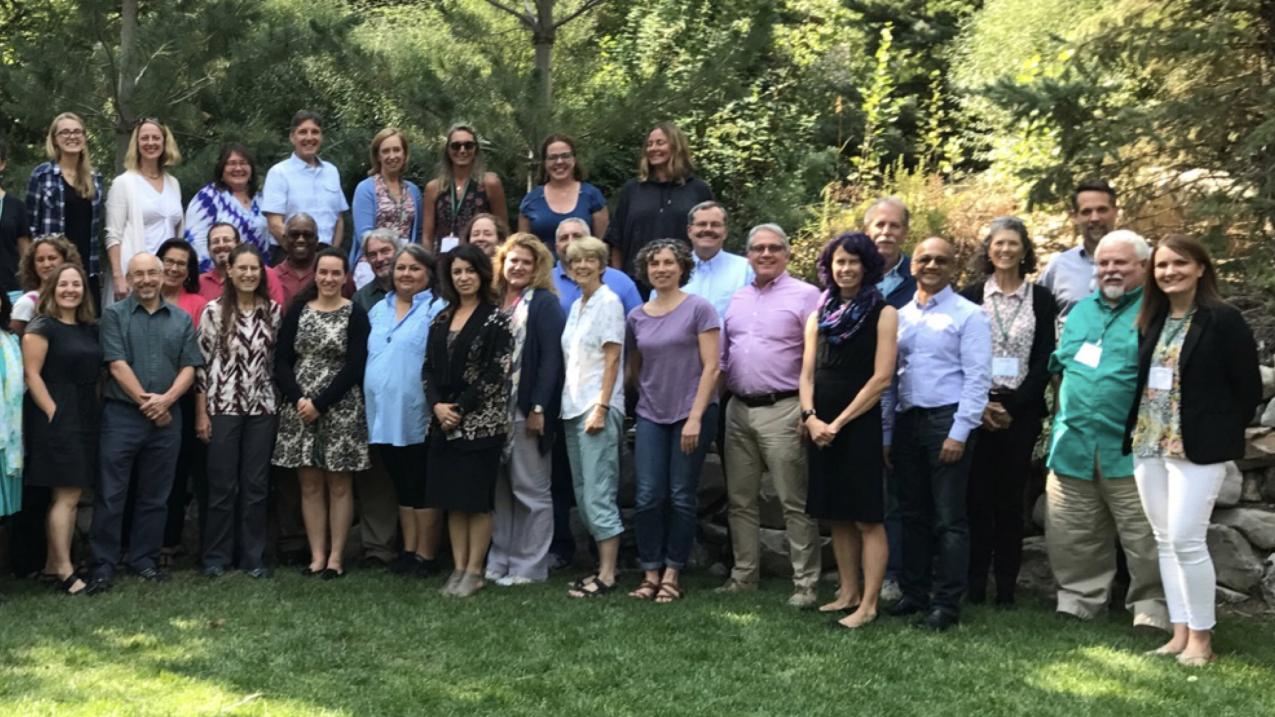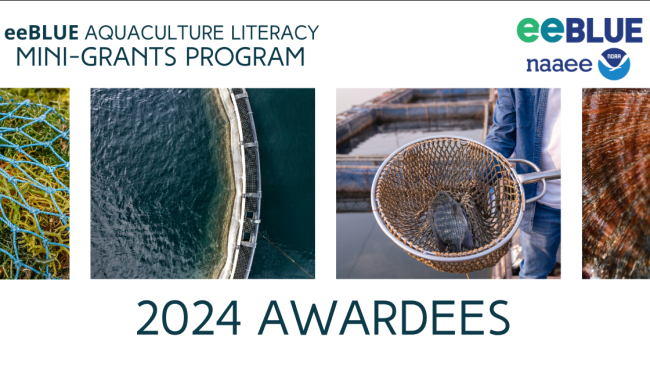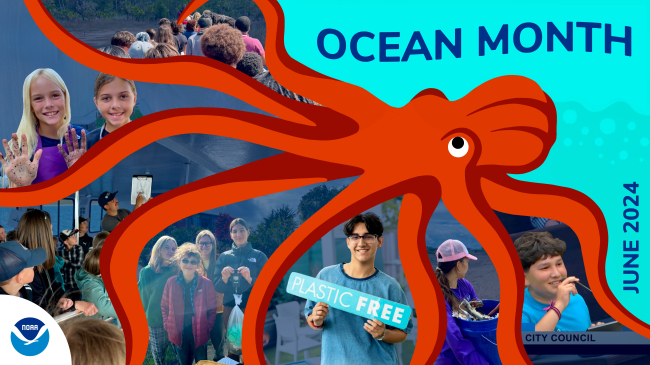When Frank Niepold joined NOAA as a Climate Education Fellow in 2005, a colleague summed up his new, seemingly impossible task: “Frank, your job is to make the nation climate-literate.” At the time, he had no staff, no partnerships, and no funding. “I was resource-constrained, massively,” Frank says. “It was like, ‘and… go!’”

Frank Niepold, third from the right, at a climate-related workshop. Partnerships like this are what Frank considers a critical part of building a climate-literate nation.
Sixteen years later, Frank is “still on that same go” as the Senior Climate Education Program Manager and Coordinator for the Climate Program Office. In 2021 he was also selected to serve as the United Nations Action for Climate Empowerment Focal Point for the United States.
“I’m now on [to] the next phase,” he says, “and it’s still the same mission.”
Faced with this daunting challenge, Frank found a strategy that has carried him through a decade-and-a-half of working on a mission to make the nation climate literate: creating partnerships and building relationships. “Climate genuinely generates collaboration in a way that I’ve never experienced elsewhere,” he says.
A series of meandering yesses
Frank has spent most of his professional life in what he calls the “quasi-spaces between science, society, and education.” A former art student and classroom science teacher, he trained in the GLOBE Program internationally so his students could contribute data to a worldwide citizen science project. Frank participated in the NASA Boreal Ecosystem-Atmosphere Study (BOREAS) mission in Saskatchewan, Canada, and later worked at NASA as an educational resources developer for the Landsat mission. The opportunities were invaluable, and helped him build relationships and partnerships. But in the end, he didn’t share NASA’s fervor for the moon or Mars. Frank was interested in our home planet.
With his sights set back toward Earth, Frank applied for NOAA’s Climate Education Fellowship, a one-time opportunity supported by a partnership between the Climate Program Office and the Office of Education. It was a major step in what he calls “a series of meandering yesses” that would eventually lead him to his current role coordinating climate education for the United States. “You never know what’s coming,” he says. “But if you say ‘yes’ often, there are opportunities that turn out to be pivotal.”
Partnerships … that’s where the work gets done.
At NOAA, Frank got to work making the nation climate-literate. “The first thing I did,” he says, “was create partnerships. That’s where the work gets done.”
In the NOAA Education community, Frank has earned a reputation as “the partnerships guy.” From co-founding the Climate Literacy and Energy Awareness Network (CLEAN Network), the U.S. Global Change Research Program’s Climate Education Interagency Working Group, and supporting the Tri-Agency Climate Education offsite link (TrACE) Collaboration to co-leading the virtual Summer Institute for Climate Change Education offsite link, partnerships are an essential part of his work.
Across these collaborations and more, Frank has learned the value of bringing partners together around a common goal and asking, “What are they trying to accomplish? What are we trying to accomplish? What can we accomplish together that we can’t apart?”
The Climate Literacy guide ... there’s nothing else like it.
Climate Literacy: The Essential Principles of Climate Sciences, which was published in 2009, was the result of one such partnership. “Getting that done was a massive task — a lot of this gray comes from this,” Frank jokes, pointing at his hair.
Developed through collaborations and consultations with science agencies, nongovernmental organizations, and experts, the guide provides an educational framework for learning, teaching, and discussing climate.
“Sometimes you wonder, it’s just a document ... is it really going to do x, y, or z?” says Frank. “It turned out, it really did a bunch of powerful stuff.”
The guide is available in English and Spanish, and has also been translated into Russian. When the National Research Council released their conceptual framework for new science standards offsite link, the report referenced the Climate Literacy guide. Frank spoke to the team and found out that it was “pivotal,” informing how they integrated climate science into the framework. That report created the foundation of the Next Generation Science Standards offsite link, which have been adopted or adapted by 44 states offsite link — carrying the climate connection into classrooms across the nation.
“That impact is still growing,” says Frank. “It’s long work, like teaching.”
Every career is going to be a climate career.
Frank’s job has changed a lot from the days when he taught middle school Earth science, but he sees a through line from the classroom to the conference table. “I don’t like to say I was a former teacher,” he says, “I like to say that I was transformed by being a teacher.”
Frank still thinks back to a question a 7th grade student asked in 2010: “So, I think I understand climate change. What I really want to know is, are all the jobs going to change?”
Frank responded, “First of all, that’s the best question I’ve ever been asked. I don’t really know the answers; let me think about it so I can respect your question.” He went on to say that he believes there are jobs that are going to disappear and some new jobs that will be created. Other jobs, like electricians or carpenters, will stick around, but may do very different things than what they do today.
“I think … that level of transformation is ahead of us,” says Frank. “Every career is going to be a climate career because what needs to happen is a transformation of every sector of society. Climate is that strong of a topic, an issue. It is going to leave almost nothing unchanged.”
The hardest thing I could be asked to do is what I’ve been trying to do.
For his part, Frank has seen many changes in the field of climate education. He is proud of how climate has remained a steady force in NOAA’s mission, and he has seen firsthand how the field has grown. “I started out in an office where I was the only person doing this,” he says. “Now we have 14, and we’re hiring.”
In the end, he believes that the partnerships that he and others have built around climate literacy are what have made his work possible. “The hardest thing I could be asked to do is what I’ve been trying to do,” says Frank. “It would be next to impossible or impossible without all these relationships.”




